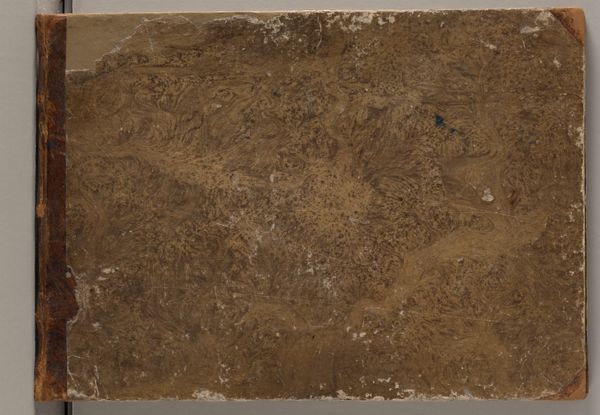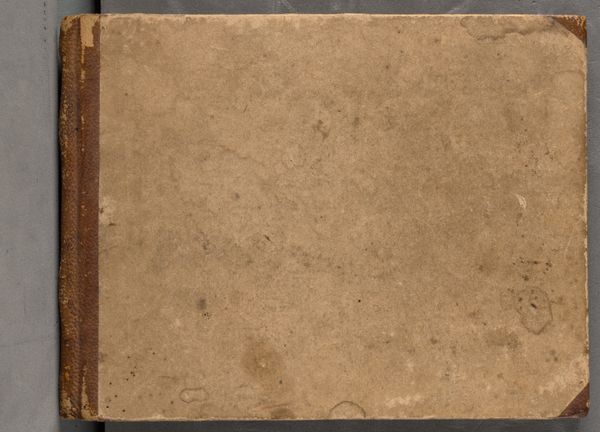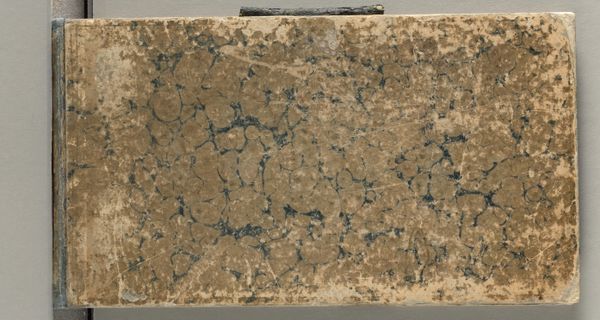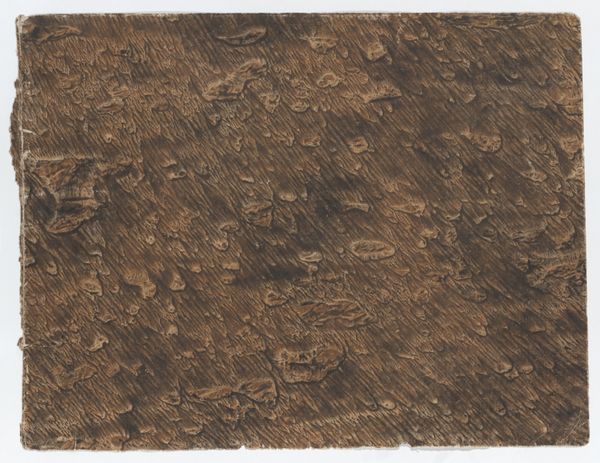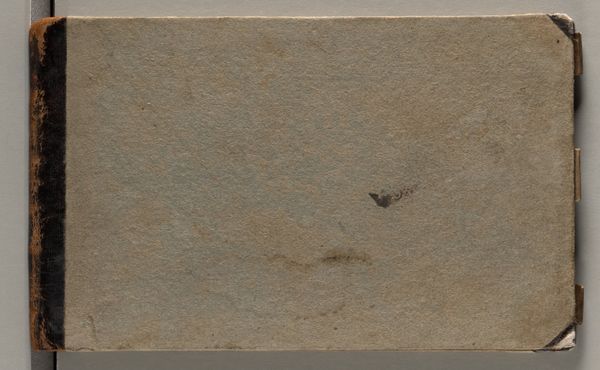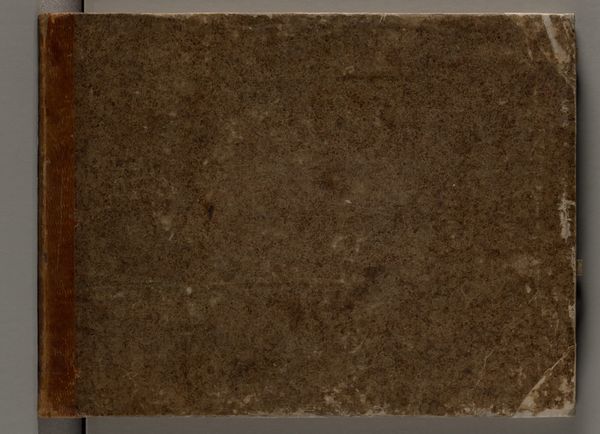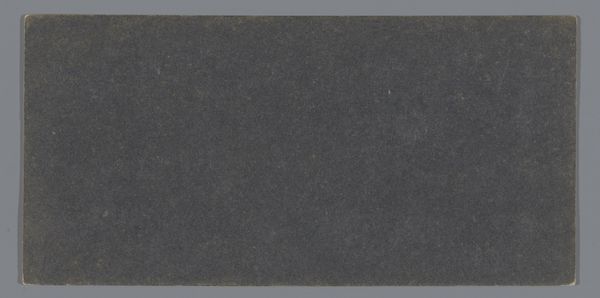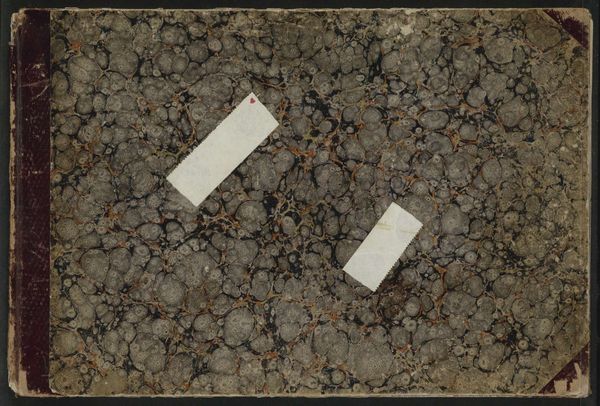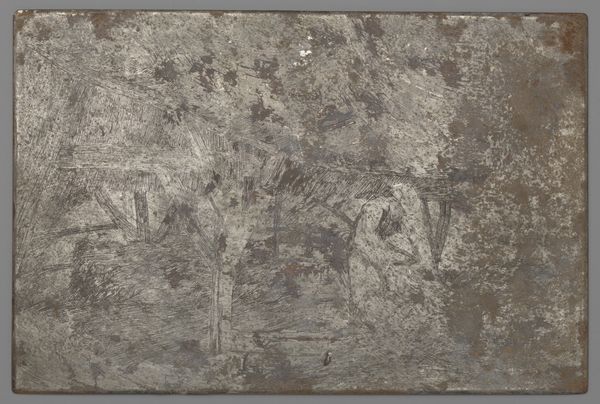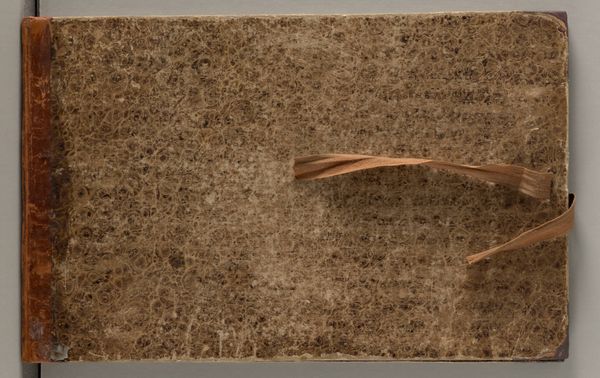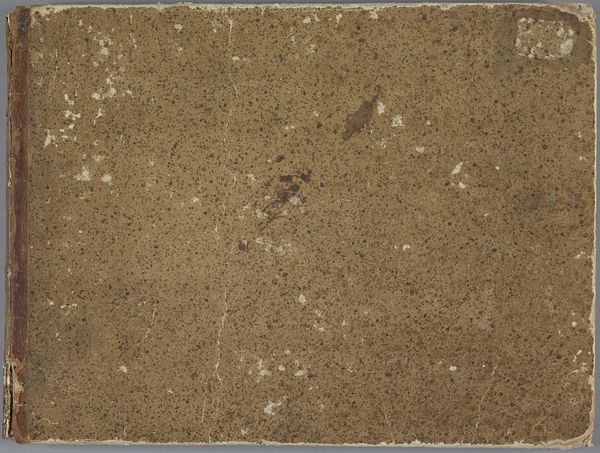
drawing, paper
#
drawing
#
landscape
#
paper
Copyright: Public Domain
Editor: So here we have Ludwig Metz's "Skizzenbuch" from 1852, made with drawing on paper. It looks like a well-worn sketchbook. It gives me a sense of the artist always being ready to capture the world around them. How do you interpret this work? Curator: I see this object as a testament to artistic labor and the everyday. Metz's sketchbook, specifically its exterior, allows us to consider the gendered dimensions of art production at this time. During the mid-19th century, landscape painting became increasingly popular. I wonder what the artist was attempting to record, and whether the worn state challenges the idea of pristine landscapes? What kind of statement is being made here by an artist who is depicting idealized nature via a well-used and traveled sketchbook? Editor: That's a great point about the gendering of artistic labor. I never really considered the sketchbook itself as having something to say, separate from its contents. Curator: The sketchbook, as an object, complicates a traditional narrative of how nature is depicted and conceived. Can we view the natural world through other cultural filters by understanding how and what an artist chooses to carry, represent, and discard? This reframes our ideas around the consumption and exploitation of resources and materials. Editor: This has changed my perspective. I was so focused on what an artist puts *into* the sketchbook, and less on how the *use* of that object can reframe landscape art. Curator: Precisely. By considering these dynamics, we gain a more nuanced understanding of landscape as a site of artistic creation, cultural production, and social exchange.
Comments
stadelmuseum about 2 years ago
⋮
In the summer of 1852, Ludwig Metz travelled to Italy. With a pencil, rarely with a brush in brown, he sketched views of the visited places and landscapes in his landscape sketchbook. Almost fully dated and labelled, the studies reveal Metz’s route from Rome to the Gulf of Naples. Later he tore out numerous pages, perhaps to use them in another context, like the loosely inserted drawings for Orvieto and Viterbo. Apart from the last two pages, the last third of the book remained empty.For a full sketchbook description, please see “Research”.
Join the conversation
Join millions of artists and users on Artera today and experience the ultimate creative platform.
